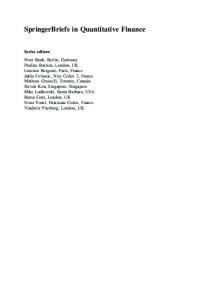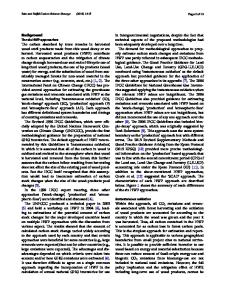Accounting for electricity derivatives under IAS 39
- PDF / 109,237 Bytes
- 14 Pages / 595 x 765 pts Page_size
- 64 Downloads / 404 Views
atricia Lopes is Assistant Professor of Accounting at the Faculty of Economics of University of Porto. She obtained her PhD in Management Science from University of Porto. Her current research interests include international accounting, accounting harmonisation and IAS/IFRS. She has actively participated in various seminars and presented her research findings at major European and American Conferences. She has published in several international journals. In the past, she was Head of Training and Education at Euronext Lisbon and worked for the Research and Development Department of the Oporto Derivatives Exchange. She is a member of a European research project on the implementation of IFRS in Europe (Intacct project).
Practical applications Electricity derivative users generally find IAS 39, the international standard for the recognition and measurement of financial instruments, to be a major challenge and have doubts about the impacts of the standard on Income statement amounts, namely in hedging strategies. IAS 39, as a general rule, requires that all derivatives are measured at fair value with movements in fair value recognised immediately through the Income Statement. IAS 39, however, also allows hedge accounting treatment for certain hedging relationships. Hedge accounting mitigates the volatile impact of derivative adoption in the Income Statement, by matching the timing of recognition of gains and losses on both the hedged item and the hedging instruments. Hedge accounting allows firms to override the normal accounting treatment of IAS 39. In order to apply hedge accounting rules, the transactions must meet the strict requirements defined in IAS 39. Yet, when hedges are accomplished with standard exchangetraded futures, compliance with IAS 39 hedge accounting rules is quite simple and straightforward. The use of electricity futures to hedge electricity price risk does not have major impacts in the Income Statement. Hedge accounting rules of IAS 39 mitigate volatility when there are balanced positions — so that only real exposures give rise to income volatility. Abstract
Journal of Derivatives & Hedge Funds, Vol. 13 No. 3, 2007, pp. 233–246 r 2007 Palgrave Macmillan Ltd 1753-9641 $30.00
This paper analyses the impact of accounting rules on the accounting for hedges with energy derivatives in the context of the launch of MIBEL Derivatives Market. Specifically, the key questions of accounting for nonfinancial derivatives raised by IAS 39, following the mandatory adoption of IFRS in Europe, are described. Under certain conditions, IAS 39 allows
contracts on commodities to be exempted from its rules. Those conditions are, however, quite strict and require a case-by-case analysis. IAS 39 requires all derivatives to be reported at fair value. Nevertheless, it allows for hedge accounting, provided that certain conditions are met, eliminating undesirable income volatility. Futures contracts pay-off profile is generally the inverse of the underlying item, and so futures tend to be easily
Journal of Derivatives & Hed
Data Loading...











